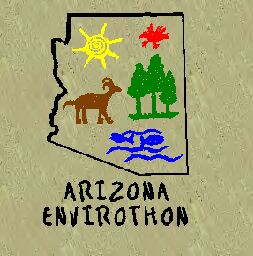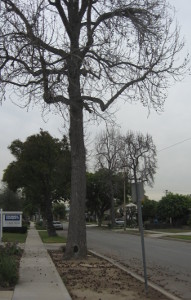
Sweetgum (non native),
long-lived but slow-growing,
tall,
with high branches that tangle with utilities,
shade in summer,
leaf fall in autumn,
barren in winter,
messy seeds pods.
|
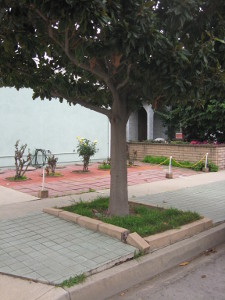
Southern Magnolia (non-native),
evergreen,
short,
long-lived but slow-growing,
roots break up sidewalks.
|

Canary Island pines (non-native),
lining both sides of a street,
very aesthetic,
great shade,
long-lived but slow-growing,
falling branch hazard for parked cars,
constant maintenance needed.
|
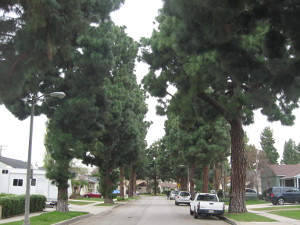
More Canary Island pine (non-native),
lining both sides of a street,
very aesthetic,
great shade,
long-lived but slow-growing,
falling branch hazard for parked cars,
constant maintenance needed.
|

Elm (non-native),
tall,
with high branches that tangle with utilities,
shade in summer,
leaf fall in autumn,
barren in winter,
falling branch hazard.
|
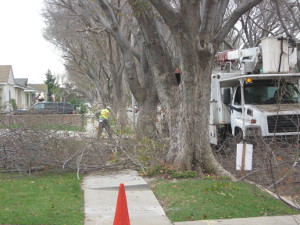
These elms require constant maintenance that only the city can provide, expensive
and slow, but a jobs program also.
|
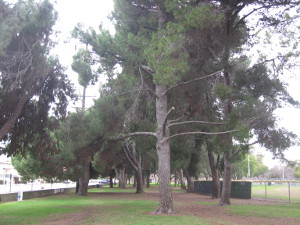
City park pines (non-native),
evergreen,
long-lived and fast-growing,
constant falling branch hazard.
|
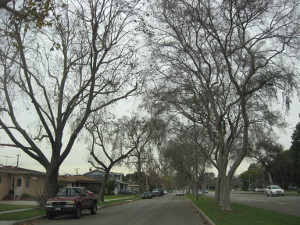
Sycamores (non-native),
tall,
with high branches that tangle with utilities,
shade in summer,
leaf fall in autumn,
barren in winter,
falling branch hazard,
messy seeds when they fall.
|

Multi-use city park, with unorganized open space (left), baseball diamonds (center),
and a golf course (right), all with pines mixed in.
|
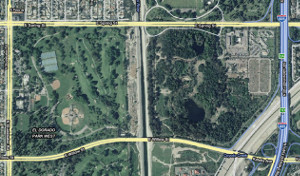
More city park land, with a golf course (left) and a wildland nature center (right),
each serving different urban forest needs and stakeholders.
|
